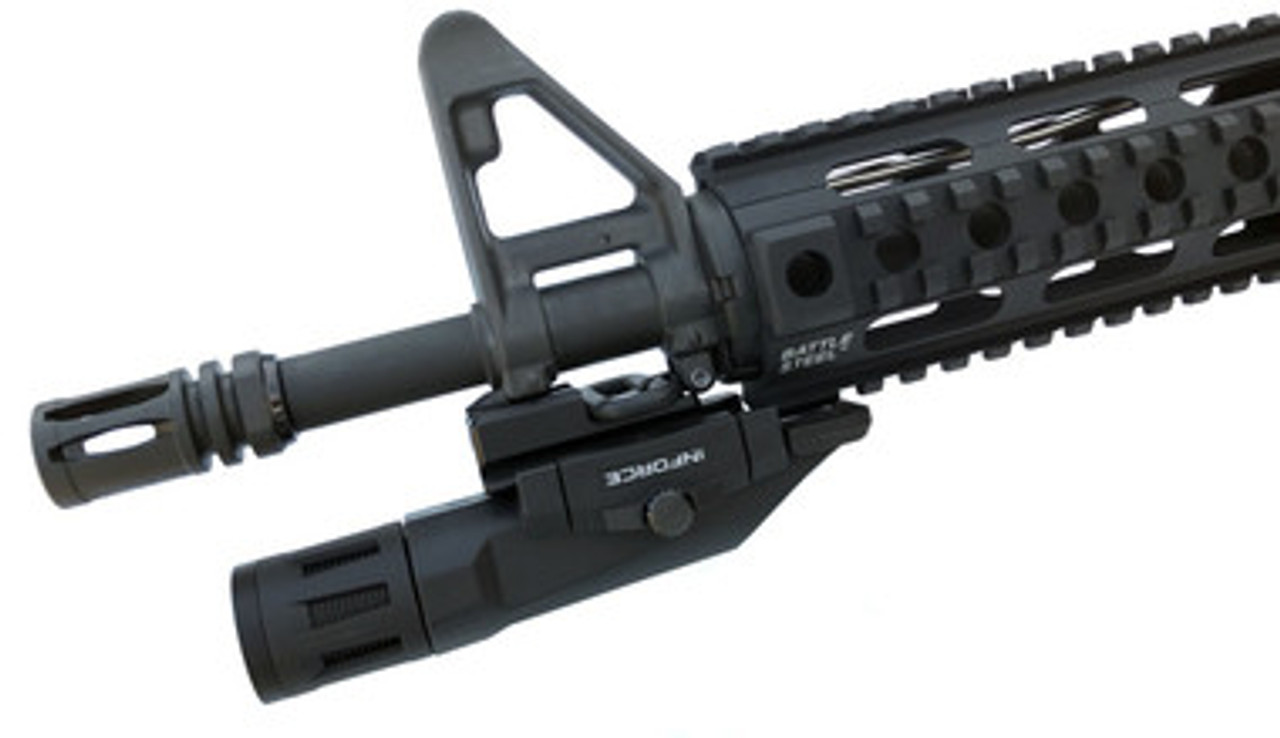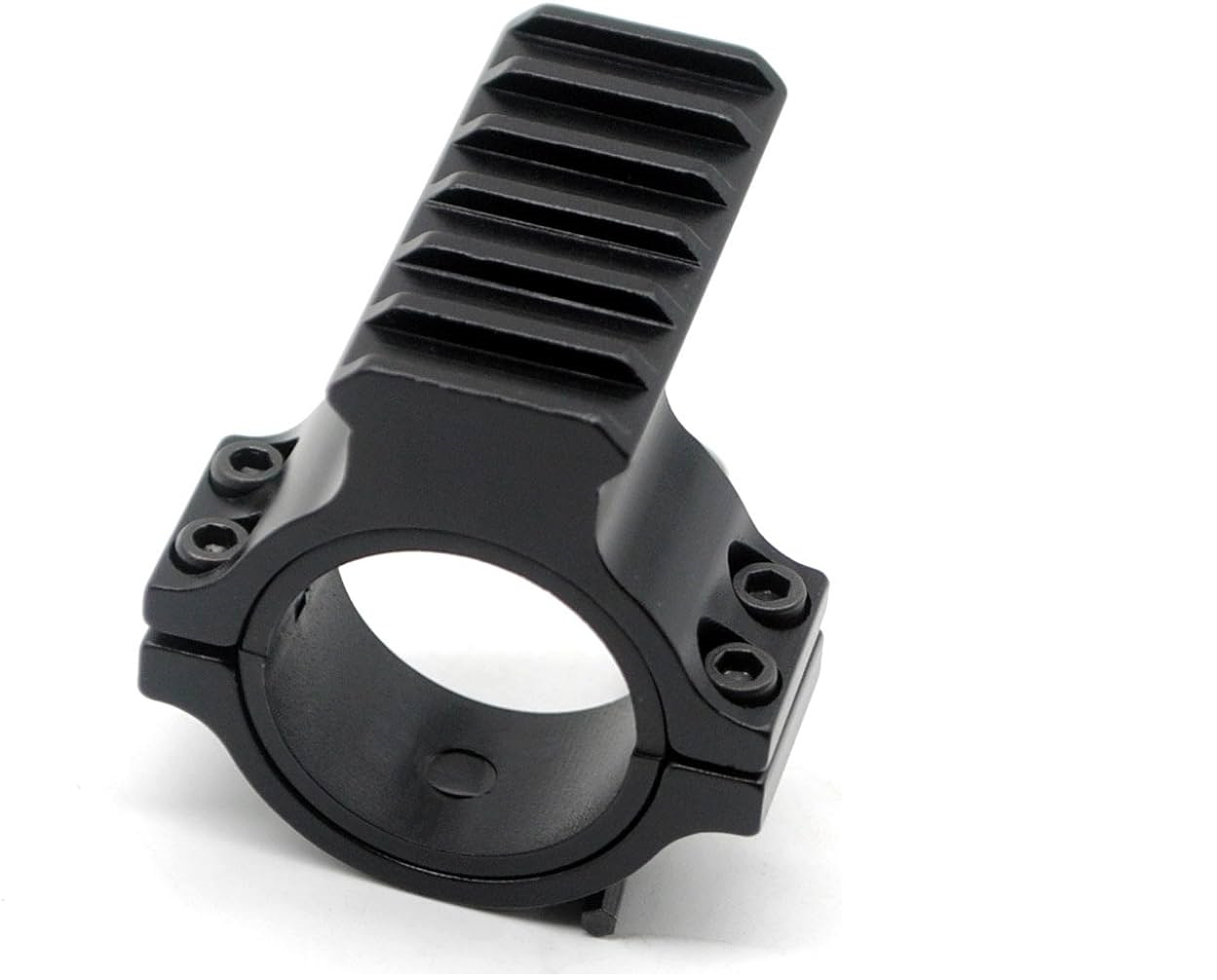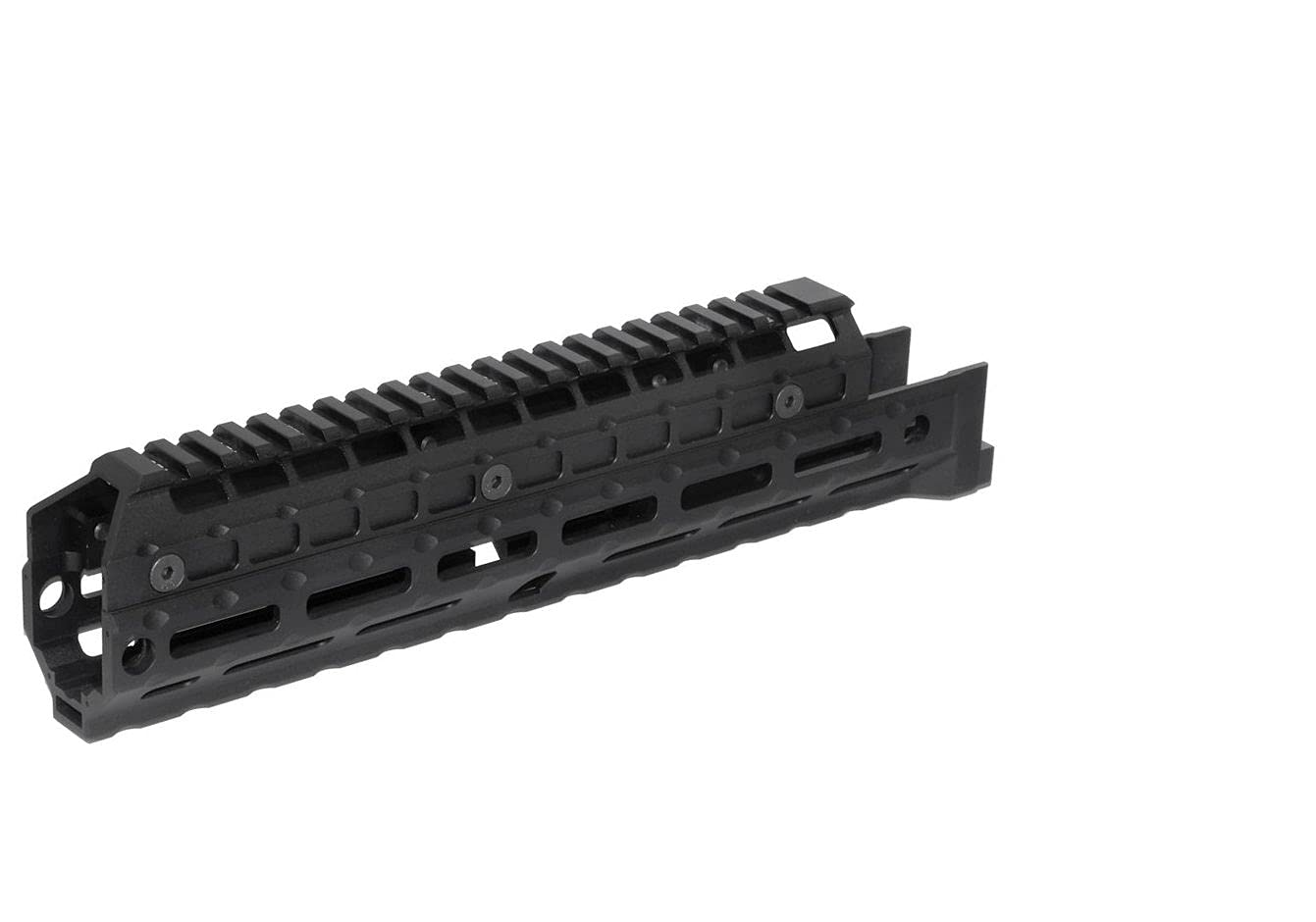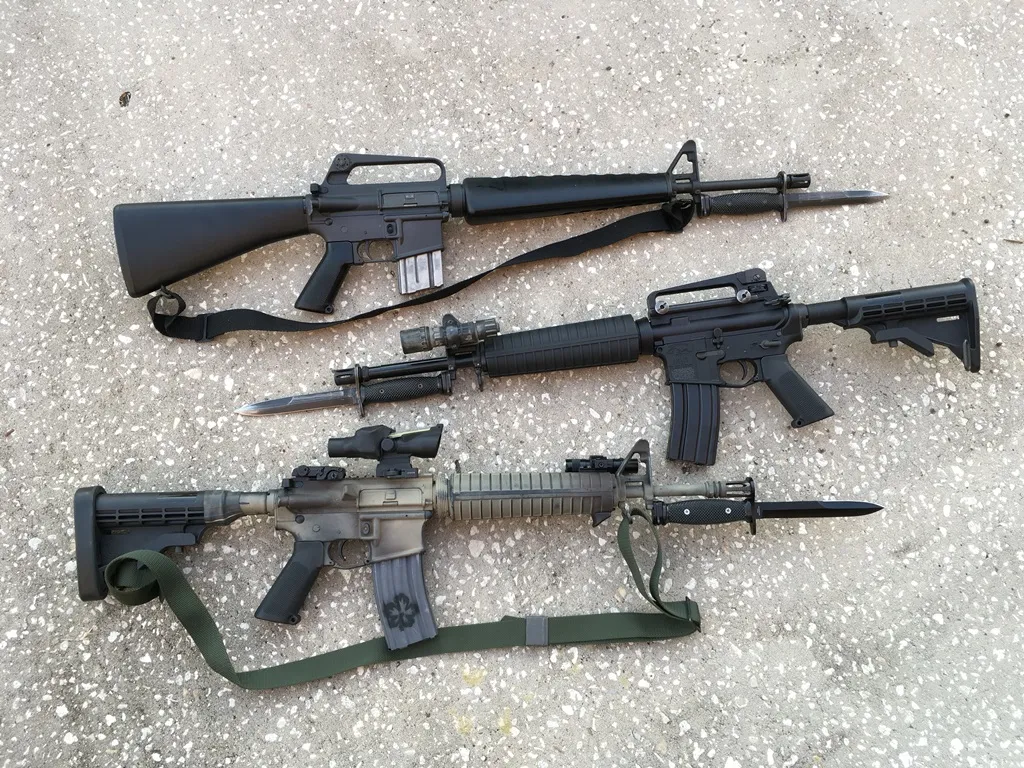
AR 15 bayonet adapteris a crucial component that revolutionizes the functionality of an AR-15 rifle. Acting as a bridge between the rifle and the bayonet, this adapter enables users to affix a bayonet securely to their firearm, expanding its utility beyond traditional shooting applications. By integrating a bayonet adapter, AR-15 owners can augment their weapon's capabilities.
Historically, bayonets have held significant importance in the realm of military firearms. Originating in the 17th century, these blade attachments were initially designed to turn muskets into makeshift spears for infantry during battles. Throughout history, bayonets evolved from their primary role as a thrusting weapon to a symbol of combat readiness and served as a psychological advantage on the battlefield.
Types Of Bayonet Adapters For The AR 15
While the AR-15 doesn't natively come with a bayonet lug, its modularity allows for various adapter options. Here's a breakdown of popular models:
1. Bayonet Lug Adapters
- Design -These clamp onto the existing gas block or handguard with Picatinny rails. Some models use screws, while others utilize levers or quick-release mechanisms.
- Material -Typically made from aluminum or polymer, with steel options for added durability.
- Compatibility -Compatible with most AR-15s with Picatinny rails on the gas block or handguard. Some models require specific handguard lengths or gas block configurations.
Popular Models
- Magpul Bayonet Mount -Secure, low-profile design with a QD lever.
- Strike Industries M-LOK Bayonet Lug -Lightweight and versatile for M-LOK handguards.
- UTG Pro AR Bayonet Lug Adapter -Affordable option with multiple mounting points.
2. Barrel-Mounted Adapters
- Design -These screw onto the barrel muzzle threads like a flash hider or muzzle brake. Some models incorporate a flash hider or compensator design.
- Material -Primarily made from steel for rigidity and heat resistance.
- Compatibility -Compatible with AR-15s with standard A2 muzzle threads (1/2x28 TPI). May not be compatible with some handguards due to clearance issues.
Popular Models
- Tacticool22 Muzzle Ring Sleeve -Affordable and simple design.
- Odin Works Echo Bayonet Mount -Multi-functional with an integrated flash hider.
- BattleComp BattleAxe -Combines a compensator with a bayonet lug.
3. Handguard Replacements
- Design -These handguards come with an integrated bayonet lug, replacing the factory handguard. Offers a cleaner look and improved ergonomics.
- Material -Usually made from aluminum or polymer, with options featuring M-LOK or Picatinny rails.
- Compatibility -Requires specific handguard compatibility and may not fit all AR-15 models.
Popular Models
- Troy Alpha Rail -Durable and versatile with multiple mounting points.
- Midwest Industries Combat Rail -Free-floating design with a built-in bayonet lug.
- Daniel Defense RIS II -High-end option with M-LOK or Picatinny rail configurations.
How To Choose The Right Bayonet Adapter For Your AR 15
Choosing the right bayonet adapter for your AR-15 can mean the difference between a secure, functional attachment and a frustrating, wobbly disappointment. Here are some key factors to consider:
1. Compatibility
- AR-15 Model -Not all adapters work with every AR-15. Consider your handguard length, gas block configuration, and barrel threading. Certain adapters require specific compatibility conditions.
- Bayonet Type -Different bayonets have varying lug shapes and sizes. Ensure the adapter matches the bayonet you plan to use, both in terms of physical fit and locking mechanism.
2. Material Strength
- Durability -Bayonets exert force, so adapter material matters. Steel offers the highest strength and heat resistance, ideal for heavy use. Aluminum is lighter but may flex under pressure. Polymer is the least durable but lightweight and budget-friendly.
- Weight -Choose a material that balances your desired strength with overall weight considerations. Heavy adapters can affect handling and performance.
3. Installation Ease
- Mounting Method -Bayonet adapters offer various mounting options. Gas block/handguard clamps rely on Picatinny rails or direct attachment points. Barrel-mounted adapters screw onto muzzle threads. Choose a method that suits your comfort level and technical skills.
- Tools Required -Some adapters require wrenches or other tools for installation, while others use quick-release mechanisms for tool-free attachment. Consider your preference and desired speed of install/removal.
4. Additional Features
- Quick-Release -Some adapters feature quick-release mechanisms for faster and easier attachment/detachment. This can be advantageous for tactical situations or frequent bayonet use.
- Integrated Functions -Certain adapters combine the bayonet lug with other features like flash hiders, compensators, or handguards. This can save space and offer additional functionality.
Matching Bayonet Types With Adapters
- Military M7/M9 Bayonets -These are designed for shorter M4 carbines with 14.5-inch barrels. On standard AR-15s with 16-inch barrels, these bayonets often need adapters that extend the existing bayonet lug or provide support for the muzzle ring.
- Civilian Bayonets -Many aftermarket bayonets come in various sizes and styles. Choose an adapter that precisely matches the bayonet's lug dimensions and locking mechanism for a secure fit.
Installation Guide - Attaching A Bayonet Adapter To Your AR 15
Safety First - Before commencing, clear the chamber and ensure your AR-15 is unloaded.Double-check safety and handle the weapon with utmost caution.
Materials
- Your chosen bayonet adapter
- Necessary tools (wrenches, Allen keys, according to adapter instructions)
- Cleaning cloth or degreaser (optional)
- Eye protection and gloves (recommended)
Step 1. Gather Your Tools And Workspace
Choose a clean, well-lit area with ample space to work comfortably. Lay down a padded surface to protect your AR-15 from scratches.
Step 2. Prepare The Mounting Point
Depending on your adapter type:
- Gas block/handguard clamp -Remove any attachments that might obstruct the mounting area. Clean the surfaces with a degreaser, if desired.
- Barrel-mounted -Ensure the muzzle threading is clean and free of debris.
Step 3. Position The Adapter
Align the adapter with the mounting point based on the manufacturer's instructions. Some adapters have specific orientation requirements.
Step 4. Secure The Adapter
Follow the specific instructions provided with your adapter. This may involve
- Gas block/handguard clamp -Tighten the screws or levers securely using the appropriate tools. Ensure no gaps or looseness remain.
- Barrel-mounted -Screw the adapter onto the muzzle threads until snug. Do not overtighten to avoid damaging the threads.
Step 5. Double-check The Installation
Visually and physically ensure the adapter is securely attached and cannot be easily moved.
Step 6. Test The Bayonet (optional)
If possible, attempt to attach your bayonet to the adapter. It should lock into place firmly with no wobble or play.
Tips For A Smooth Installation
- Read the instructions carefully -Each adapter may have specific installation requirements. Familiarize yourself with the process before starting.
- Use the right tools -Employ the tools recommended by the manufacturer to avoid improper tightening or damage.
- Don't overtighten -Applying excessive force can damage the adapter or surrounding components. Tighten screws snugly and evenly.
- Check for clearance -Ensure the adapter doesn't interfere with any other attachments or function of your AR-15.
- Seek help if needed -If you encounter difficulties or uncertainties during the installation process, consult a qualified gunsmith or experienced AR-15 owner for assistance.
Disclaimer -This guide is intended for informational purposes only and should not be considered a substitute for professional gunsmithing advice or manufacturer instructions. Always prioritize safety and consult qualified personnel if unsure about any aspect of firearm modification or attachment installation.
Legal Considerations And Compliance For Bayonet Adapters
Owning and using a bayonet adapter on an AR-15comes with legal complexities that vary depending on location and specific circumstances. Navigating these complexities is crucial for responsible gun ownership and avoiding potentially serious legal consequences.
Federal Regulations
- National Firearms Act (NFA) -Bayonets themselves are not regulated under the NFA. However, if you attach a blade exceeding 12 inches to your AR-15 via the adapter, the entire firearm might be classified as a "weapon with a barrel or barrels of less than 16 inches" and fall under NFA jurisdiction. This requires registration and compliance with specific transfer and ownership rules.
- Gun Control Act (GCA) -Certain states have banned AR-15s or rifles with specific features. Owning a bayonet adapter on a banned rifle could be considered a violation of the GCA, depending on state and firearm configuration.
State Regulations
- Individual state laws -Each state has its own firearms regulations that may or may not address bayonet adapters and their legality. Some states ban bayonet lugs on specific rifles or have restrictions on blade lengths attached to firearms.
- Concealed Carry Laws -Carrying a rifle with a bayonet adapter could potentially be considered illegal concealed carry in some states, even if the bayonet is not attached.
Importance Of Compliance
- Penalties -Violating state or federal firearms laws can result in hefty fines, imprisonment, and loss of gun ownership rights. Ignorance of the law is not a defense.
- Responsible Gun Ownership -Understanding and adhering to legal considerations demonstrates responsible gun ownership and promotes public safety.
Steps For Compliance
- Research Your State Laws -Thoroughly research your state's specific regulations regarding bayonet adapters and attached blades. Contact your local law enforcement agency if you have any doubts.
- Consult with a Gunsmith -Consult with a qualified gunsmith to ensure your AR-15 configuration, including the adapter and bayonet, complies with federal and state laws.
- Stay Informed -Laws and regulations can change. Stay up-to-date on any legal changes that might affect the legality of your bayonet adapter.
Review Of Popular AR 15 Bayonet Adapters
Adding a bayonet adapter to your AR-15 can enhance its versatility, but navigating the options can be tricky. Here's a breakdown of some popular choices, focusing on user feedback, durability, compatibility, and overall performance:
1. Magpul Bayonet Mount
- User Feedback -Widely praised for its secure, low-profile design and quick-release lever. Some users report minor wobble with heavier bayonets.
- Durability -Steel construction ensures long-lasting performance.
- Compatibility -Attaches to Picatinny rails on gas blocks or handguards. May not fit some handguard lengths or gas block configurations.
- Overall Performance -A top choice for its robust build, ease of use, and reliable locking mechanism.
2. Strike Industries M-LOK Bayonet Lug
- User Feedback - Lightweight and adaptable, appreciated by M-LOK handguard owners. Reports of occasional difficulty aligning the bayonet due to the clamp design.
- Durability -Aluminum construction keeps it lightweight but raises concerns about long-term wear with heavy use.
- Compatibility -Specifically designed for M-LOK handguards. Won't work with other mounting options.
- Overall Performance -A convenient option for M-LOK setups, but durability and alignment concerns warrant consideration.
3. UTG Pro AR Bayonet Lug Adapter
- User Feedback -Affordable and versatile, offering multiple mounting points. Some users experience looseness and rattling over time.
- Durability -Aluminum construction raises concerns about longevity under stress.
- Compatibility -Attaches to Picatinny rails on gas blocks, handguards, or even foregrips. Requires sufficient rail space.
- Overall Performance -A budget-friendly option for its mounting versatility, but durability and stability issues might be dealbreakers for heavy users.
4. Tacticool22 Muzzle Ring Sleeve
- User Feedback -Simple and affordable, appreciated for its ease of installation and secure fit. Concerns arise about potential barrel damage from long-term use.
- Durability -Steel construction ensures longevity, but compatibility with muzzle devices needs consideration.
- Compatibility -Screws onto standard A2 muzzle threads. May not fit certain muzzle brakes or flash hiders.
- Overall Performance -A solid choice for its simplicity and effectiveness, but potential barrel wear and limited muzzle device compatibility require scrutiny.
5. Odin Works Echo Bayonet Mount
- User Feedback -Multifunctional with an integrated flash hider, praised for its sleek design and performance. Higher price point might raise eyebrows.
- Durability -Steel construction ensures long-lasting performance.
- Compatibility -Screws onto standard A2 muzzle threads. Requires specific clearance with handguards to avoid interference.
- Overall Performance -A premium option for its functionality and aesthetics, but the price and potential clearance issues might deter some users.
Maintenance And Care For Bayonet Adapters
Adding a bayonet adapter to your AR-15 expands its capabilities, but like any firearm component, it requires proper maintenance and care for optimal performance and safety. Here are some tips to keep your bayonet adapter in tip-top condition:
Regular Cleaning
- Frequency -After every use or at least once a month, depending on the amount of use and environmental conditions.
- Tools -Soft bristle brush, clean cloth, mild soap and water (avoid harsh chemicals), lubricant (optional).
Process
- Remove the bayonet -This allows for easier access to the adapter's crevices.
- Brush away debris -Use the brush to gently remove dirt, dust, and carbon buildup from all surfaces.
- Wipe it down -Dampen the cloth with soapy water and gently wipe the adapter clean. Rinse with clean water and dry thoroughly with a dry cloth.
- Lubricate (optional) -Apply a thin layer of lubricant to the locking mechanism and moving parts to prevent rust and ensure smooth operation.
Inspection
Frequency -Before each use and after cleaning.
Focus
- Look for cracks, dents, or loose screws -These can compromise the adapter's strength and security.
- Check the locking mechanism -Ensure it engages securely and releases smoothly.
- Inspect the mounting points -Make sure the adapter is firmly attached and shows no signs of movement or loosening.
Storage
- Store in a cool, dry place -Avoid moisture and extreme temperatures to prevent rust and warping.
- Keep it protected -Use a gun case, holster, or dedicated storage compartment to prevent accidental damage.
- Separate the bayonet -If possible, store the bayonet separately to avoid unnecessary wear and tear on the locking mechanism.
Additional Tips
- Retighten screws periodically -Over time, vibrations and use can loosen screws. Check them regularly and tighten them if necessary.
- Don't over-lubricate -Excessive lubrication can attract dirt and dust, leading to faster wear and tear.
- Seek professional help if needed -If you notice any significant damage or have concerns about the adapter's functionality, consult a qualified gunsmith.
By following these simple maintenance tips, you can ensure your bayonet adapter stays in top condition for years to come. Remember, proper care not only extends the life of your equipment but also contributes to safe and reliable operation.
By taking the time to maintain your bayonet adapter, you can enjoy its added functionality and versatility on your AR-15 with confidence. Remember, responsible gun ownership includes proper care for all components, and your bayonet adapter is no exception.
See Also: How To Choose & Install The Right Gun Holster For Truck?




